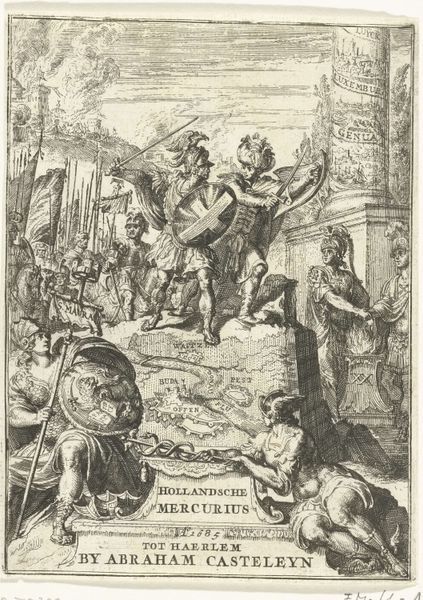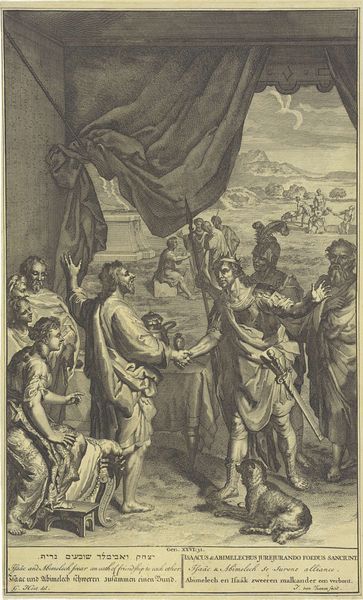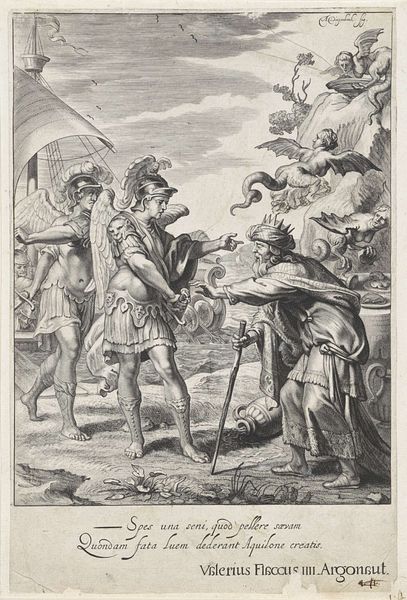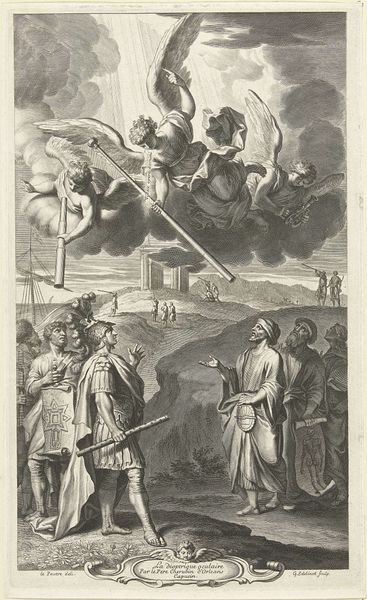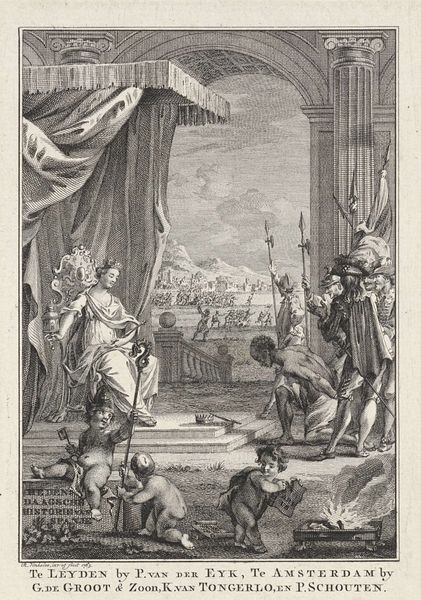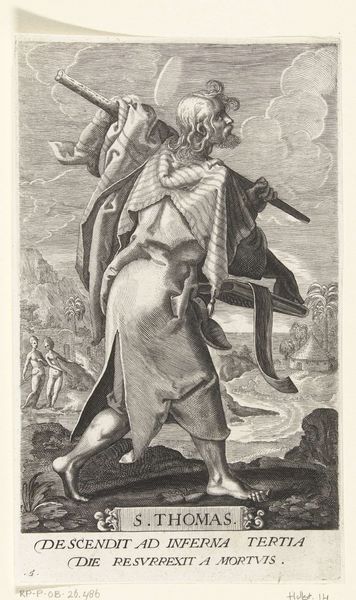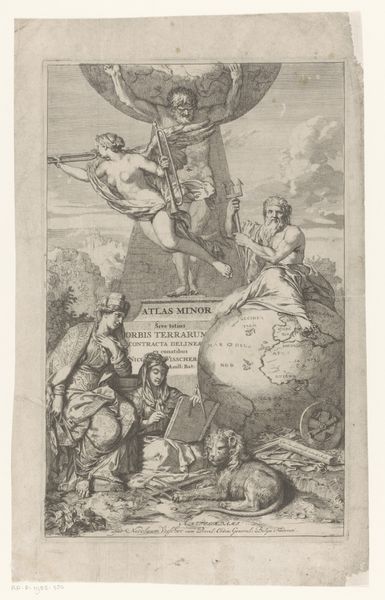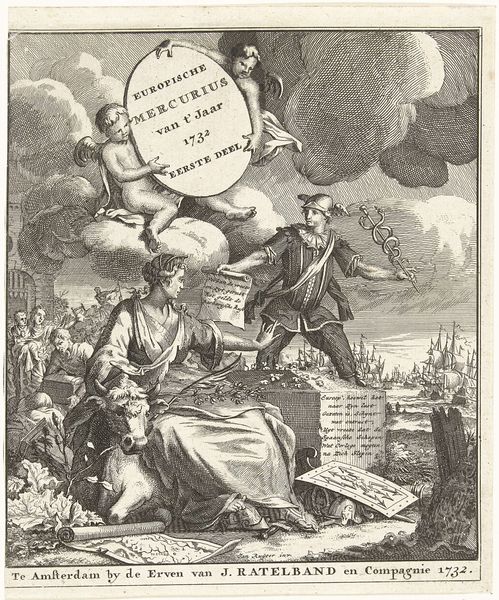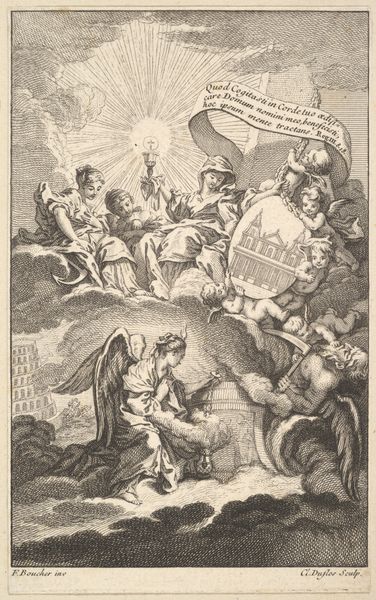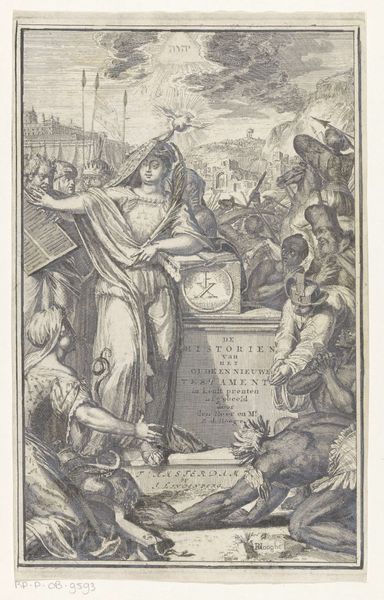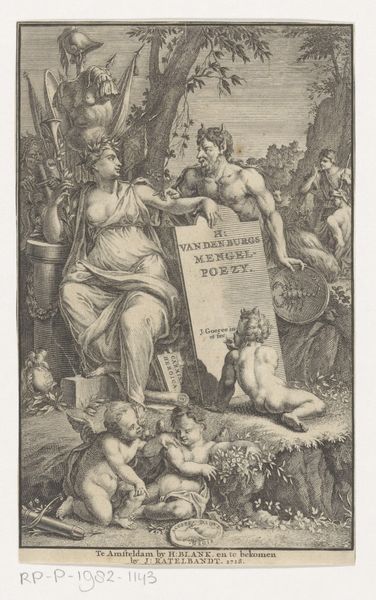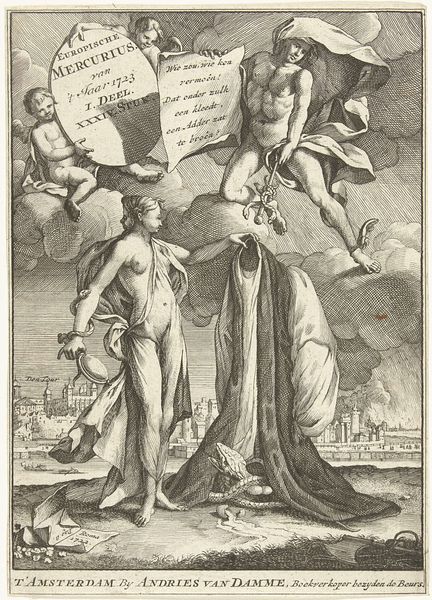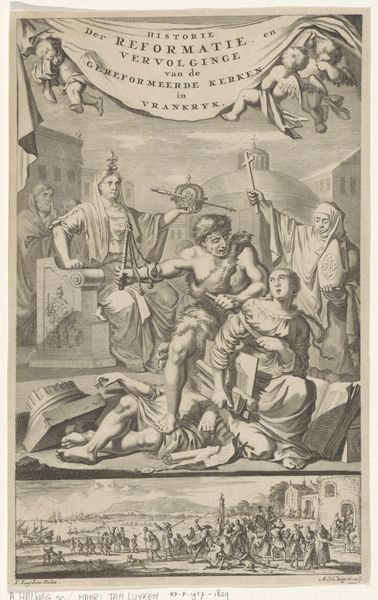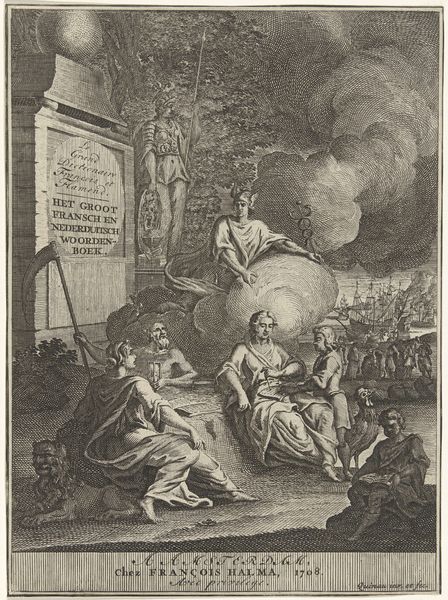
print, engraving
portrait
allegory
baroque
old engraving style
figuration
line
history-painting
engraving
Dimensions: height 175 mm, width 132 mm
Copyright: Rijks Museum: Open Domain
Curator: This print, titled "Titelpagina voor de Europische Mercurius van 1735," was created in 1735 by Jan Ruyter. It's an engraving meant as a title page for a periodical. Editor: At first glance, the composition feels quite busy but there is this elegant symmetry across the horizontal plane where the figures converge. Curator: Absolutely. It showcases a baroque style with allegorical figures interwoven with contemporary symbols of power. Note how the central female figure, perhaps representing Clio, the muse of history, is being offered a laurel wreath, traditionally a sign of honor and victory. She appears as though to write a script. This is a comment on who decides history. Editor: Yes, her placement and attire speak to a position of power. The clarity and depth in the cross-hatching work give the work weight and the suggestion of volume. What can you tell me of the relationship with the war imagery and its spatial orientation within the picture? Curator: Well, this engraving presents a fascinating view into the contemporary concerns of the time. On one side of the print we can view a map being stepped on. And ships engaging in battle fill out the other quadrant. Note the cannons firing to drive home this period of violence. Publications like the "Europische Mercurius" played a crucial role in shaping public opinion and chronicling events during an age of nearly constant war. This image seems keen to create an ideal vision where military successes could be molded. Editor: I’m struck by the contrast between the serenity of Clio, and the aggressive energy in her peripheral surrounding landscape filled with the clamor of naval battle. What narrative do you think the image projects through this contrast? Curator: That tension speaks to the periodical's own project: shaping the narrative. They're acknowledging the chaotic reality of war while also suggesting the possibility of control, of imposing order through documented history, of crafting reputation through allegories and association. So many actors looking for glory in the cloud. The historical implications embedded within such symbolic communication are, themselves, pretty revealing. Editor: It seems a visual device that works at creating tension as well as the historical documentation you’re outlining. The lines have an extraordinary life of their own which I’m only starting to understand now. Curator: Indeed. Thinking about this image in its original context, it served not only as a marker of content but also as a statement about power, knowledge, and the very act of recording history. It's history reflected upon, revised, made better.
Comments
No comments
Be the first to comment and join the conversation on the ultimate creative platform.
